Interim Report on the Biological Survey of River Quality - 2011
Results of the 2011 Investigations, May 2017
Year: 2017
This report presents the results of the biological river quality investigations carried out in the year 2011.
Interim Report on the Biological Survey of River Quality - 2010
Results of the 2010 Investigations, May 2017
Year: 2017
This report presents the results of the biological river quality investigations carried out in the year 2010.
Interim Report on the Biological Survey of River Quality - 2009
Results of the 2009 Investigations, May 2017
Year: 2017
This report presents the results of the biological river quality investigations carried out in the year 2009.
Interim Report on the Biological Survey of River Quality - 2008
Results of the 2008 Investigations, May 2017
Year: 2017
This report presents the results of the biological river quality investigations carried out in the year 2008.
Interim Report on the Biological Survey of River Quality - 2007
Results of the 2007 Investigations, May 2017
Year: 2017
This report presents the results of the biological river quality investigations carried out in the year 2007.
Interim Report on the Biological Survey of River Quality - 2006
Results of the 2006 Investigations, May 2017
Year: 2017
This report presents the results of the biological river quality investigations carried out in the year 2006.
Interim Report on the Biological Survey of River Quality - 2005
Results of the 2005 Investigations, May 2017
Year: 2017
This report presents the results of the biological river quality investigations carried out in the year 2005.
Nitrates Directive Article 10 Report for Ireland for the Period 2012-2015
Council Directive of 12 December 1991 concerning the protection of waters against pollution caused by nitrates from agricultural sources (91/676/EEC), June 2016
Year: 2016
This report provides the information from Ireland to the European Commission, as required under Article 10 of the Nitrates Directive (91/676/EEC), with respect to the sixth reporting period (2012-2015). The report comprises: a description, with maps, of the evolution of water quality in groundwater and surface waters; a statement on the adoption of a Whole Territory Approach with respect to the designation of nitrate vulnerable zones; a summary of agricultural activities and an account of the implementation of the agricultural Code of Good Practice and a summary of the principal measures and an evaluation of the National Action Programme for limiting nitrate inputs from agricultural sources.
Bathing Water Quality in Ireland
A Report for the Year 2015, April 2016
Year: 2016
The quality of Ireland’s bathing waters remains very high with just over 93% of identified bathing waters (128 of 137) meeting the minimum EU standards for ‘Sufficient’ water quality over the 4 year assessment period 2012-2015. Full details can be view in the downloaded report.
WFD Application Phase 1 Technical Overview
WFD Application Phase 1 Technical Overview, August 2015
Year: 2015
WFD Application Phase 1 Technical Overview
An approach to characterisation as part of implementation of the Water Framework Directive
Version 2.0 May 2015, August 2015
Year: 2015
WFD Characterisation Approach (May 2015)
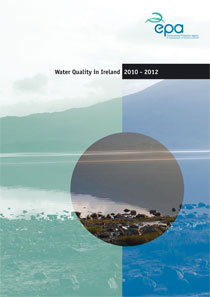
Water Quality in Ireland 2010 - 2012
Year: 2015
The purpose of the report is to give a detailed review of all the main issues related to the quality of the aquatic environment in Ireland, in order to provide guidance towards the protection and enhancement of this valuable resource, and the preparation of second cycle river basin management plans under the Water Framework Directive (2000/60/EC).
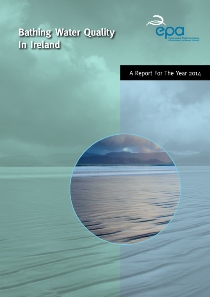
The Quality of Bathing Water in Ireland 2014
An Overview for the year 2014, April 2015
Year: 2015
Overall the quality of Ireland’s bathing water quality remains extremely high, with 94% of bathing waters complying with new stricter EU standards and achieving at least ‘Sufficient’ water quality status in 2014. Assessment was undertaken using 4 years of data (2011-2014) as opposed to annual data previously. Around 90% of other monitored waters also met the standards for at least ‘Good’ quality.
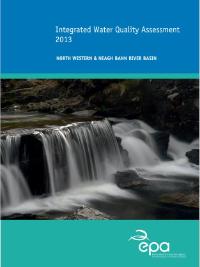
Integrated Water Quality Assessments - North Western & Neagh Bann River Basin Districts 2013
Year: 2014
This assessment presents the latest monitoring data, an assessment of the data and a focus on key issues that affect water quality in the NBIRBD and NWIRBD.
Bathing Water Factsheet
Bathing Water Factsheet, July 2014
Year: 2014
General information on bathing waters in Ireland
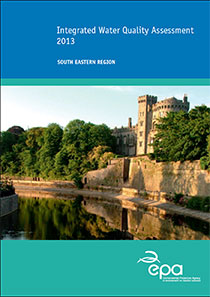
Integrated Water Quality Report South Eastern River Basin District 2013
Year: 2014
This assessment presents the latest monitoring data, an assessment of the data and a focus on key issues that affect water quality in the South Eastern River Basin District.
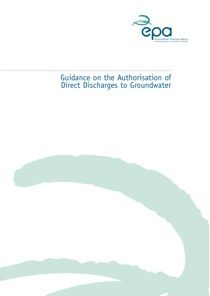
Guidance on the Authorisation of Direct Discharges to Groundwater
Year: 2014
This guidance addresses direct discharges to groundwater from point sources of potential pollution. It supplements the earlier report published by the EPA in 2011 entitled “Guidance on the Authorisation of Discharges to Groundwater” which focused on the technical assessment of indirect discharges to groundwater.
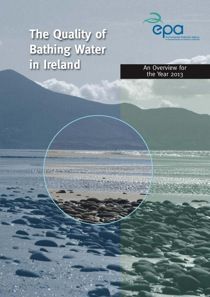
The Quality of Bathing Water in Ireland 2013
An Overview for the year 2013, April 2014
Year: 2014
Overall the quality of Ireland’s bathing water quality remains very high, with 97 per cent of bathing waters complying with the EU mandatory values and achieving at least ‘Sufficient’ water quality status in 2013. 114 bathing waters met the stricter guideline values achieving ‘Good’ status. The warm, dry summer in 2013 aided a return to normality compared to the wet season of 2012 where only 91 of 136 waters met ‘Good’ status.
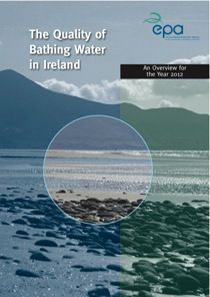
The Quality of Bathing Water in Ireland 2012
Year: 2013
The monitoring of water quality at 136 identified bathing waters in 2012 is governed by the new Bathing Water Quality Regulations 2008 (S.I 79 of 2008) which transposed the new EU Directive on bathing water (2006/7/EC). The 2006 Directive gives stronger focus on the protection of public health, a proactive approach to the management of bathing water quality and greater public participation.
Summary Statistics for Estuaries and Coastal Waters 2007-2009
Appendix 5.1 of Water Quality in Ireland 2007-2009: Summary statistics for individual transitional and coastal water bodies assessed between 2007-2009., January 2013
Year: 2013
The monitoring results for 89 Irish transitional (estuarine) and coastal waterbodies 2007-2009 are summarised. The results should be read in conjunction with Chapter 5 of Water Quality in Ireland 2007-2009.